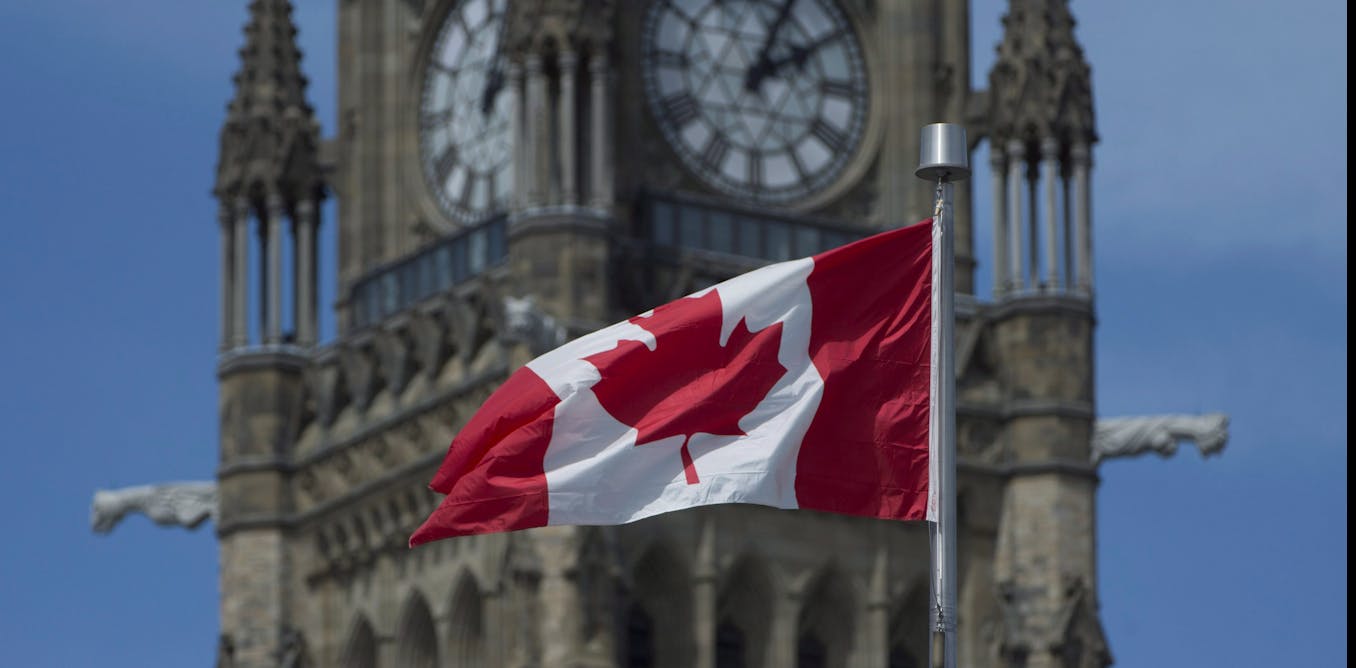Canada, once admired for its robust economic health and high living standards, now faces a worrying decline. The nation’s gross domestic product (GDP) per capita growth trails its peers in the Organisation for Economic Co-operation and Development (OECD), while Canadian workers clock more hours for less output.
Business investment is shrivelling while government expenditure is ballooning, creating an unhealthy fiscal cocktail. The health-care system in Canada is also lagging behind its European counterparts.
The legal system has grown expensive and slow; the justice system is also experiencing a chronic under-staffing crisis. Young Canadians, feeling dissatisfied, have reported low happiness scores compared to their international counterparts (in 58th place, just before Ecuador).
This palpable downturn begs two urgent questions: what underlies this fall in living standards? And what can be done to stop, and perhaps even reverse, this unsettling trend?
Domestic challenges
As Canada grapples with a pervasive economic malaise, its decline in living standards is rooted in a constellation of domestic and global challenges.
Domestically, while we observed flourishing net incomes from 2019 to 2022 across several industries — from oil and gas extraction, which saw profits multiply tenfold, to mining, wood and paper, car dealers and food and beverage retail — the gains have not trickled down to the average Canadian household.
Instead, inflation and high food prices have nudged many families toward the precipice of poverty.
Compounding these woes is a stark deficiency in competition. Canada’s markets, characterized by high concentration where few firms dominate entire sectors, needs more robust anti-trust enforcement or other mechanisms to encourage competition.

THE CANADIAN PRESS/Cole Burston
These mechanisms are conspicuously weak or absent, which has allowed a handful of families to amass wealth while the majority sees scant benefit. The wealth gap between the rich and poor in Canada widened at the fastest rate on record in 2023.
This imbalance has stifled innovation and hindered economic dynamism. Short-term orientation and few incentives for long-term investments add to unnecessarily heated markets, like real estate, in a country that has a wealth of land.
International challenges
Internationally, Canada is caught in the headwinds of shifting global dynamics. The world moves inexorably towards a multi-polar geopolitical system, marked by rising protectionism — the practice of safeguarding a country’s domestic industries from international competition through tariffs or trade policies — that disadvantages smaller economies.
Concurrent technological disruptions in biological sciences, electrification and artificial intelligence, coupled with an aging demographic and rising populism, further complicate Canada’s economic trajectory.
Canadian policy, with its pronounced focus on consumption and social spending, has neglected critical investments in infrastructure, digitalization, research and development and education. The result is a dismal performance in productivity, intellectual property generation and overall investment compared to its peers.
Once a top contender in the OECD for living standards, Canada now lags behind the U.S. and other advanced economies. It’s a stark reversal from its stature over the last three to four decades.
The path forward, fraught with challenges, demands a reinvigorated commitment to fostering competition and innovation, lest the nation continues its slide into economic mediocrity.
Reversing Canada’s decline
The imperative for Canada now is to forge a recovery path that is as bold as it is broad. Canada needs a vision that drives its ambitions and decision-making.
A first step in the right direction must be a rethinking of its competition policy. The acquisition of HSBC Bank Canada by the Royal Bank of Canada — merging two of Canada’s biggest lenders — was the latest disappointment in this area. The merger left many consumers worse off.
Strengthening anti-trust laws and improving their enforcement could invigorate the marketplace, encourage new entrants and dismantle the oligopolies that currently throttle economic vitality.

THE CANADIAN PRESS/Sean Kilpatrick
This policy pivot is not just about policing; it’s about revitalizing Canadian innovation by ensuring the markets are competitive enough to challenge incumbents and stimulate continuous improvement.
Moreover, tackling the issues at home must coincide with a strategic orientation towards global competitiveness. Canada needs a coherent strategy to enhance the international competitiveness of its industries.
Canada stands at a crossroads
Canada not only needs to safeguard against protectionism, but must actively nurture sectors poised for growth through technological advances, such as artificial intelligence and clean energy.
Such a strategy should include bolstering the national skills base — via education and training — aligned with future market needs and technological evolution. Simultaneously, the government must re-calibrate its fiscal priorities.
The current trajectory of heavy consumption spending must pivot towards investing in infrastructure, digitalization, and research and development. Such investments will lay the groundwork for sustainable growth and innovation, essential for propelling Canada back to its former high standings in global economic indices.
Lastly, addressing Canada’s aging demographic requires innovative policy responses. These might include immigration reforms to attract young talent instead of forcing newcomers to Canada into low-skilled jobs, and initiatives to encourage higher birth rates, coupled with policies that leverage the potential of the elderly population.
Canada stands at a crossroads. The decisions made today will determine whether it can reclaim its position as a leader in global living standards or continue to flounder in the face of systemic economic challenges. The time for tentative steps is over; bold, decisive action is necessary to chart a course back to prosperity.










